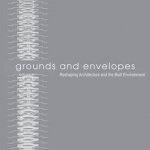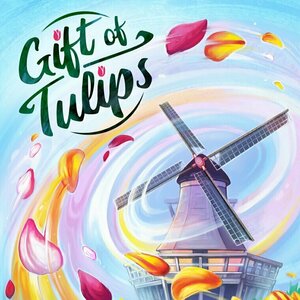Gareth von Kallenbach (980 KP) rated Call Of Duty: United Front in Video Games
Jun 19, 2019
The content first released on the PS4 which gives that platform a 30 day advanced released window over the other platforms.
The three maps are as follows…
Market Garden
Set during Operation Market Garden in The Netherlands, players must fight in and around Allied Headquarters which leads to several close-quarter battles. The kitchen is a very dangerous area and there are multiple places for enemies to hide in the shadows and strike.
If you like a run and gun style of play, this is the map for you.
Stalingrad
The snow-covered map is set in the factory district and provides raised areas, long range attacks, tunnels, and solid action. The detail level is good and using train cars to hide behind before launching an attack makes the map a great mix of gameplay styles.
Monte Cassino
This map set in Italy has players battle in a village and has some great tactical variation. From courtyards to rooftops, players can alternate between run and gun and distanced attacks. There is some great fun in shooting enemies from the roof and then jumping down to finish them off point blank.
Operation Supercharge
Set in Tunisia during the second battle of El Alamein players must build and defend bridges as they look to assault and defend a key train bridge. Anyone who has played the War mode knows what to expect as teamwork is the key for this mode and different play styles are well-supported.
The final part of the pack is the new Zombie chapter and it is very difficult even for experienced players.
The Tortured Path
Players make a last-ditch stand to fight the evil hordes but the ideal village where the game takes place offers few places to hide and narrow passages which makes players develop hit and run tactics as standing your ground does not work well.
I have played all of the Zombie modes to date and this one is very challenging. I have asked other players if I am wrong about this and they have all agreed that the map offers a very high challenge as not only are the enemies tougher and abundant; the weapons do not seem to do as must damage.
United Front is a nice selection of content which will increase the options for fans of Call of Duty: WW2. However some fans may find it is a mix of good but not great content that does not change greatly from what is already offered. The new maps are fun but they do not have a unique or quirky quality to them like some maps have.
http://sknr.net/2018/07/31/call-of-duty-united-front/

Weather 14 days Pro
Weather and Travel
App
Ad free version! Weather 14 Days provides detailed weather information for USA and the rest of the...

Grounds and Envelopes: Reshaping Architecture and the Built Environment
Michael U. Hensel and Jeffrey P. Turko
Book
Providing a source of vision for the revitalisation of ground and envelope as spatial elements that...

Lonely Planet Pocket Amsterdam
Lonely Planet and Karla Zimmerman
Book
Lonely Planet: The world's leading travel guide publisher Lonely Planet Pocket Amsterdam is your...
Hazel (1853 KP) rated The Ice-Cream Makers in Books
Dec 14, 2018
An intriguing blurb promises an incredible story about an Italian ice-cream making family, however the story is nothing like you expect. Ernest van der Kwast’s <i>The Ice-Cream Makers</i> is set between a small village in Italy and the busy summer streets of Rotterdam. The Talamini family has been creating innovative ice-cream flavours for over a century, running a successful and hard-working parlour in the Netherlands. The business is handed down from father to son throughout the years, but now eldest son Giovanni has broken the tradition.
Giovanni Talamini has no interest in making ice-cream and would much rather spend the day reading poetry. After pursuing a literary career, Giovanni is now the director of the World Poetry Festival. Younger brother Luca has been left to pick up the <i>spatula</i> of the family business, but he has a problem of his own. Giovanni faces a dilemma: cut himself of from his family entirely or help his brother out with his peculiar request.
The highly unusual request mentioned in the blurb of <i>The Ice-Cream Makers</i> does not actually surface until the latter stages of the book. For the majority of the narrative there is no clear storyline, however the detail and information van der Kwast provides about ice-cream making, poetry and European culture makes the novel entirely worth reading. The request itself is entirely unexpected and not at all possible to guess, but it is an oddly brilliant way of reuniting two estranged brothers.
It takes a while for the narrative to start flowing as it constantly changes time periods. Giovanni, the narrator, rarely speaks in the present tense and is constantly relating events from his childhood and adulthood interspersed with family history and historical knowledge. On occasion the book takes on the air of an autobiography as Giovanni gives an in depth insight to the life of his family and his break from tradition. There is also the odd chapter that becomes almost a work of non-fiction, providing the reader with highbrow literary references and factual information about the history of ice-cream.
Once the scenes caused by the male sexual mind have been glossed over, <i>The Ice-Cream Makers</i> becomes a beautifully written, almost poetical story that compels and engages the reader despite the lack of a clear-cut storyline. The literary references will appeal to the intellectual, scholar, philosopher or culture enthusiast, for this novel teaches and inspires as well as entertains.
The amount of research van der Kwast conducted is phenomenal. The accuracy (or so is presumed) of the historical factors implies the author had thoroughly investigated the subject matter prior to writing. It is almost as though van der Kwast lived the life of Giovanni; it is entirely believable – hence the sense of an autobiography. Although the nature of the novel’s theme suggests a serious tone, van der Kwast has included a great deal of humour in the form of Giovanni and Luca’s father and his questionable mental health.
The lack of a climax prevents <i>The Ice-Cream Makers</i> from being described as an exciting book, however its beautifully poetic prose makes up for this absence. The philosophical insight into poetry will make you think about life and admire Giovanni for insisting on making his own way in the world. Likewise, Luca’s quiet acceptance and perseverance in the family business is also an admirable feat. Readers with a dislike for descriptive sexual scenarios may feel uncomfortable in a few of the resulting scenes, however the general story compensates for these distasteful passages. All in all, a high-quality work of fiction.

The Wonder Weeks
Health & Fitness and Reference
App
The Wonder Weeks worldwide bestselling baby app is a personalized weekly calendar of your baby’s...
Purple Phoenix Games (2266 KP) rated Gift of Tulips in Tabletop Games
Mar 2, 2021
Gift of Tulips is a game of choices. In it players are attendees at the festival attempting to gather the most beautiful bouquet of flowers for themselves as well as gifting some to friends. The winner of the game is the player who can best decide which tulips should be kept, which should be gifted, and which should be donated to the secret festival.
DISCLAIMER: We were provided a prototype copy of this game for the purposes of this review. These are preview copy components, and I do not know for sure if the final components will be any different from these shown. Also, it is not my intention to detail every rule in the game, as there are just too many. You are invited to download the rulebook, back the game through the Kickstarter campaign, or through any retailers stocking it after fulfillment. -T
To setup refer to the rulebook to adjust the deck of tulip cards per number of players. Shuffle this deck and place aside for now. Each player receives a scoring card, reference card, favorite color player cube, and two tulip cards from the deck. Per number of players set the appropriate Festival Cards on the table from 1st Place through 4th Place. Draw two cards from the deck and place the highest-numbered card under the 1st Place Festival Card and the lower valued tulip card under 2nd Place. Each player then looks at their dealt cards and decides which they would like to keep to start their personal bouquet and which they wish to donate face-down to the secret festival stack. The game is now ready to begin!
On a turn the active player will draw one card from the deck and then perform one action. Next they will draw a second card and perform a different action (not the same action as the first). The available actions are keeping a tulip for the bouquet, gifting the tulip to a friend, or adding a card to either the festival or the secret festival stack.
Keeping a tulip for the player’s bouquet is simply that: place the card face-up in front of the player and score immediate points depending on the tulip type’s position in the festival. This is also important when scoring for gifting. As tulips are added to their types in the festival, their placement in the festival can change. So while a purple tulip, for example, begins the game as the highest numbered tulip in the 1st position, another tulip type, orange maybe, may possibly overtake the 1st position cards by having a larger total value in tulips. When this happens, the newly-increased-in-rank tulip stack pushes the next highest into the lower position. Each position’s festival card will contain icons that award points for when that type of tulip is kept, given, and when majority of cards is owned at endgame.
Similarly, when a player opts to gift a tulip for an action, they simply choose an opponent (well, friend) and give them the card. By referencing the tulip type’s current position in the festival the player may score immediate points.
Lastly the player may choose to donate their tulip to the festival (face-up under the Festival Cards or face-down into the secret festival stack). By donating to the festival proper they will add the card to the appropriate type stack and adjust the total value and position within the festival. Should the player wish to add the card to the secret festival stack, they simply add it face-down.
Once all cards have been drawn and played from the deck the game is over and final scoring may begin. Firstly the secret festival cards are to be shuffled and five from this deck will be added to the festival proper to fine-tune some value adjustments (so that is why players may want to add to the secret festival during play). Once the five cards have been added players will address each tulip type by placement in the festival. The tulip type under the 1st Place card will score majority points to the player with the majority of that type of card (not value, but number of flowers). Similarly, the player with the second most of that type will score the second majority and so on through 4th Place. The player with the most points at the end of the game has won and will now owe the other players a bouquet of real flowers. Well, maybe not that last part.
Components. Again, this is a prototype copy of the game so components may be different as a result of a successful Kickstarter campaign. That said, this is a bunch of cards and some token markers (cubes in the prototype). The cards all feature incredible botanical artwork that is simply beautiful to behold. The card backs and Festival Cards all feature a lovely delftware pattern from the Netherlands. The artwork on this game is amazing and really colorful, like so many from Weird Giraffe Games.
But do I enjoy the gameplay? Absolutely. It reminds my wife and me of a great little game called Biblios where players are choosing where to allocate cards, and are not allowed to simply gobble them for themselves. Being able to adjust the market, if you will, is also a mechanic that I truly enjoy. A static market is fine, but those kinds of games are a little easier to abuse. Constantly shifting markets is where it’s at.
Being able to gift your opponents higher cards for those immediate points is new and clever, but you have to always be keeping track of the number of cards given per type. Obviously shuffling all your blue tulips to the same person may result in that person holding majority at endgame. But then again, there are ways to adjust the market to counter that. It is just so fun to think about and play.
I also am in love with the art. I mentioned this in my components review but I simply love the way this game looks. Art and theme go a long way with me, and this one certainly has both in spades.
So if you are a fan of beautiful games with a quick teach and light to medium gameplay, I urge you to check this out. The art and theme are strong, the gameplay is super solid and fun, and you feel great donating so many lovely flowers at the end of the game. If you are looking for that gorgeous game to complete your collection, or you need a game to fill that empty Netherlands slot in your collection, please consider backing Gift of Tulips. When you have a game that uses both orange and purple as main colors you KNOW it’s going to be great!

Coyote : navigation, traffic, alerts
Navigation and Travel
App
Coyote is a community app which guides you and alerts you in real time about dangers on the road. ...

Trainline Europe
Travel and Shopping
App
Trainline is the quickest and easiest solution for booking train tickets online in Europe. Since...

Innovation Management and New Product Development
Book
Innovation Management and New Product development is an established, text for MBA, MSc and advanced...

